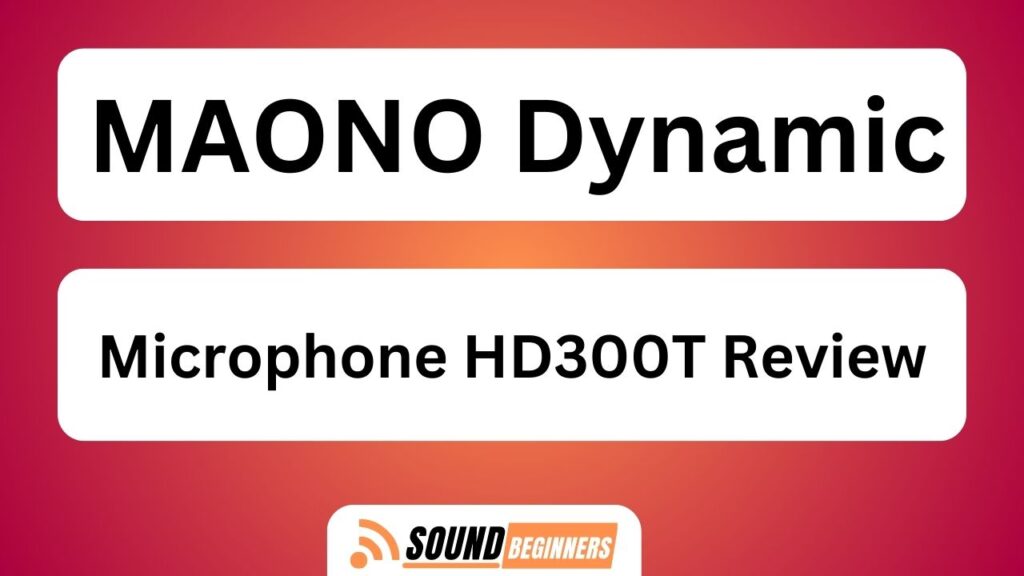Looking to build your own basic studio? Wondering how much it will cost you? Look no further.How Much Does It Cost To Build A Basic Studio?
In this article, we’ll walk you through the process of determining your studio setup needs, researching equipment and budgeting, considering acoustic treatment and soundproofing, and more.
So, if you’re ready to take your music production to the next level, join us as we explore the costs involved in building a basic studio.
Key Takeaways:How Much Does It Cost To Build A Basic Studio?
- Determine the niche of the studio setup (music production, podcasting, video recording) to narrow down equipment needs and budget accordingly.
- Research and compare prices of essential equipment such as microphones, headphones, audio interfaces, cameras, lighting equipment, and editing software to find the best quality and affordability.
- Allocate a budget beforehand and prioritize essential equipment within that budget while considering reputable brands for quality and cost efficiency.
- Consider the importance of acoustic treatment and soundproofing for enhancing overall sound quality, researching and budgeting for materials such as acoustic panels, bass traps, and diffusers, and factor in the benefits of professional assistance for optimal results.
Determine Your Studio Setup Needs
You’ll need to determine your studio setup needs before we can discuss how much it will cost to build a basic studio. This involves considering the studio setup essentials and creating a detailed list of equipment you require.
Start by identifying the type of content you plan to create in your studio, such as music production, podcasting, or video recording. Based on your chosen niche, make a list of essential items like microphones, headphones, audio interfaces, cameras, lighting equipment, and editing software.
Once you have determined the necessary equipment for your studio setup, it’s time to move on to budgeting. Researching the prices of different brands and models will help you estimate costs accurately. Take into account both quality and affordability when making decisions about which products to purchase. Remember that it’s essential not only to consider initial expenses but also any recurring costs like monthly software subscriptions or maintenance fees.
With an understanding of your needs and a well-planned budget for equipment in place, we can now explore how much it will cost to build a basic studio without compromising on quality or functionality.
Research and Budget for Equipment
When researching and budgeting for equipment, we first make a comprehensive list of essential items. These include microphones, headphones, and audio interfaces.
We then compare prices and read reviews to ensure that we find the best equipment within our budget. This meticulous process allows us to make informed decisions. We consider both quality and cost efficiency in building our studio setup.
Make a list of essential equipment such as microphones, headphones, and audio interfaces
To build a basic studio, you’ll need essential equipment like microphones, headphones, and audio interfaces. When it comes to microphones, there are several reputable brands to consider for studio recordings. Some popular options include Shure, Audio-Technica, and Neumann. Each brand offers different models with varying features and price ranges. It’s important to compare microphone brands based on factors such as sensitivity, frequency response, and durability to find one that suits your recording needs.
In addition to microphones, the quality of headphones is crucial in a studio setup. Good headphones allow for accurate monitoring of audio during recording and mixing sessions. Look for headphones that provide a flat frequency response and comfortable fit for long periods of use.
By investing in reliable equipment from trusted brands, you can ensure better results in your recordings. In the next section, we will discuss how to compare prices and read reviews to find the best equipment within your budget without compromising quality or performance.
Compare prices and read reviews to find the best equipment within your budget
If you’re on a budget, it’s important to compare prices and read reviews to find the best equipment for your studio setup. One of the best places to buy equipment is online retailers like Amazon and Sweetwater, as they often offer competitive prices and have a wide selection of products. Additionally, checking out local music stores or online classifieds can sometimes yield great deals on used equipment.
When searching for affordable equipment, it’s helpful to set a budget beforehand and prioritize the essentials such as microphones, headphones, and audio interfaces. Look for reputable brands that offer good quality at reasonable prices. Reading reviews from other users can provide valuable insights into the performance and durability of different products.
By doing thorough research and comparing prices, you can make informed decisions about which equipment will suit your needs without breaking the bank.
As you consider acoustic treatment…
Consider Acoustic Treatment
When creating a professional sound in a studio, it’s crucial to understand the importance of acoustic treatment.
This involves researching and budgeting for acoustic panels, bass traps, and diffusers.
These elements play a vital role in controlling reflections, reducing unwanted noise, and enhancing the overall sound quality of recordings.
Understand the importance of acoustic treatment in creating a professional sound
Invest in proper acoustic treatment for your studio to achieve a professional sound.
The importance of room acoustics cannot be overstated when it comes to creating a high-quality recording and mixing environment. Without adequate treatment, you may experience issues such as unwanted reflections, flutter echoes, and standing waves that can negatively impact the accuracy and clarity of your recordings.
Fortunately, there are various DIY acoustic treatment options available that can help improve the acoustics of your space without breaking the bank. Researching and budgeting for acoustic panels, bass traps, and diffusers is essential in creating a well-balanced sound within your studio.
These treatments work together to control reflection patterns, absorb low-frequency energy, and diffuse sound waves effectively. By investing in proper acoustic treatment, you’ll create an optimal listening environment that allows for accurate monitoring and ultimately enhances the overall quality of your recordings.
Research and budget for acoustic panels, bass traps, and diffusers
Researching and budgeting for acoustic panels, bass traps, and diffusers can greatly enhance the sound quality in your studio. These elements play a crucial role in controlling reflections, reducing unwanted echoes, and improving overall acoustics. Acoustic panels are typically used to absorb high-frequency sounds, while bass traps target low-frequency reverberations. Diffusers scatter sound waves to create a more balanced and natural-sounding environment. When researching these products, it’s important to consider the size of your studio and the specific acoustic issues you want to address. Budgeting is also essential as prices can vary depending on the brand and quality of materials. To help you compare options, we’ve created a table below that outlines different factors such as cost range, dimensions, and recommended uses for each type of acoustic treatment.
| Type of Treatment | Cost Range | Dimensions | Recommended Uses |
|---|---|---|---|
| Acoustic Panels | $100-$500 | Various | Recording booths, control rooms |
| Bass Traps | $50-$200 | Various | Corners of rooms or behind speakers |
| Diffusers | $200-$800 | Various | Live rooms or mixing areas |
By properly researching and budgeting for these acoustic treatments, you can achieve a professional sound quality in your studio setup. Now let’s transition into the next section where we’ll discuss how to plan for soundproofing your studio without compromising on aesthetics or functionality.
Plan for Soundproofing
To achieve soundproofing in a basic studio, it’s important to consider the materials you’ll need. Soundproofing techniques can significantly reduce noise transmission and create an optimal recording environment. Here are some key benefits of soundproofing:
- Reduced external noise: By using soundproofing materials, you can minimize disturbances from outside sources such as traffic or neighbors.
- Improved audio quality: Soundproofing helps prevent echoes and reverberations, resulting in clearer recordings with better acoustics.
- Increased privacy: Soundproofing ensures that your studio activities remain confidential and prevents sound leakage to adjacent spaces.
- Enhanced concentration: With reduced distractions, you can focus better on your work without interruptions.
By implementing these soundproofing techniques, you can create a professional and productive studio space. However, it’s essential to factor in professional assistance when planning for soundproofing to ensure optimal results.
Factor in Professional Assistance
When planning to soundproof a studio, it’s important to determine if professional assistance will be needed. This can come from a studio designer or acoustician. Researching the cost of hiring such expertise and budgeting accordingly is crucial for a successful project.
By seeking help from professionals in the field, we can ensure that our studio is optimized for sound quality and meets our specific needs.
Determine if you will need help from a professional studio designer or acoustician
If you’re on a tight budget, consider consulting with a professional studio designer or acoustician to determine if their expertise is necessary. They can provide valuable knowledge and guidance in creating an optimal studio design for your needs.
Here are three reasons why seeking professional assistance may be beneficial:
- Studio design tips: Professionals have experience and knowledge in designing studios that optimize sound quality and minimize acoustic issues. They can offer valuable advice on room layout, soundproofing, and equipment placement.
- DIY studio setup: While it’s possible to set up a basic studio on your own, professionals can help ensure that you make the most of your space and equipment, avoiding common mistakes that might affect the quality of your recordings.
- Precision and efficiency: Working with professionals can save you time and money in the long run by helping you avoid costly mistakes and unnecessary purchases.
Consider these points when deciding whether to hire professional assistance for your studio project.
In the subsequent section, we will discuss how to research the cost of hiring assistance and budget accordingly.
Research the cost of hiring assistance and budget accordingly
Researching the cost of hiring assistance can help you budget accordingly for your studio project. When it comes to building a basic studio, hiring professional help such as a studio designer or acoustician can be crucial in achieving optimal sound quality and functionality. However, it is important to consider the cost implications of bringing in outside expertise.
The fees charged by these professionals vary depending on their experience and the scope of your project. To get an accurate estimate, reach out to multiple designers or acousticians and ask for detailed quotes. Additionally, don’t forget to factor in any additional costs such as travel expenses or equipment rentals that may be necessary during their involvement in your project.
By researching the cost of hiring assistance and including it in your budget planning, you can ensure that you have all aspects covered before moving on to calculating installation and wiring costs.
Transitioning into the subsequent section about ‘calculate installation and wiring costs’, it is essential to thoroughly understand the financial requirements involved in setting up a basic studio.
Calculate Installation and Wiring Costs
When setting up a basic studio, it’s crucial to consider the installation and wiring costs. We need to determine whether professional assistance is required for electrical work or cable management.
It’s important to research the cost of installation services and factor them into our budget. This will ensure that we have a comprehensive understanding of all expenses involved in building our studio.
Determine if you will need to hire professionals for electrical work or cable management
You’ll need to determine if you’ll need to hire professionals for electrical work or cable management. When it comes to setting up a basic studio, there are several factors to consider before making this decision. Here are some key points to keep in mind:
- Complexity of the electrical work: If your studio requires extensive wiring and installation of specialized equipment, it may be best to hire professionals who have the expertise and knowledge in handling such tasks.
- Safety considerations: Electrical work can be dangerous if not done correctly. Hiring professionals ensures that all safety measures are followed and reduces the risk of accidents or damage.
- Time and efficiency: Professionals can complete the job more quickly and efficiently, saving you time and allowing you to focus on other aspects of setting up your studio.
- Expert advice: Professionals can offer valuable insights and recommendations based on their experience.
Once you’ve determined whether professional help is necessary, it’s important to research the cost of installation services and factor them into your budget. Seamlessly transitioning into researching costs for installation services.
Research the cost of installation services and factor them into your budget
To determine the cost of installation services for your electrical work or cable management, consider reaching out to professionals and incorporating their fees into your budget. Researching the cost of professional installation is crucial in ensuring that you allocate sufficient funds for this aspect of building a basic studio. By doing so, you can avoid any unexpected financial surprises along the way.
When researching installation services, it is important to gather information from multiple sources and compare prices. This will help you make an informed decision and find the most cost-effective option without compromising on quality. Additionally, take into account any additional expenses such as permits or equipment required for the installation process.
To give you an idea of potential costs, here’s a table outlining estimated prices for different types of installations:
| Installation Service | Average Cost |
|---|---|
| Electrical Work | $500 – $2,000 |
| Cable Management | $200 – $800 |
| Audio Wiring | $300 – $1,500 |
By conducting thorough research and considering these costs upfront, you can better plan for software and virtual instruments in your studio setup.
Plan for Software and Virtual Instruments
For a basic studio, it’s important to plan for software and virtual instruments. When considering software compatibility, you need to ensure that all the programs you choose are compatible with your operating system and recording equipment. This will prevent any technical issues down the line and save you from wasting money on incompatible software.
Additionally, virtual instrument plugins are essential for creating a wide range of sounds in your recordings. These plugins can mimic various instruments such as pianos, guitars, and drums, allowing you to experiment with different sounds without needing physical instruments.
Planning ahead for these software and virtual instrument needs will help you stay within your budget while still achieving professional-quality recordings.
As we move into discussing the budget for maintenance and upgrades, it’s crucial to consider long-term costs alongside initial investments.
Budget for Maintenance and Upgrades
Planning ahead for the maintenance and upgrades of our equipment is vital to ensure the longevity and optimal performance of our studio. In order to keep costs manageable, it is important to consider cost-effective maintenance strategies.
Regular cleaning, proper storage, and routine checks can help prevent major issues and extend the lifespan of our gear. Additionally, researching DIY upgrade options can provide us with affordable solutions to improve our studio setup without breaking the bank. Whether it’s upgrading RAM in a computer or adding new plugins to our software collection, exploring these options can help us stay within budget while still enhancing our studio capabilities.
As we consider these factors, it’s also crucial that we research financing options so that we are prepared for any necessary expenses without compromising on quality or functionality.
Research Financing Options
Consider researching financing options to ensure you have the necessary funds available for any expenses that may arise without compromising on quality or functionality. When it comes to building a basic studio, there are several financing options you can explore.
Here are five key options to consider:
- Small business loans: These loans can provide the necessary capital to cover your studio construction costs and allow you to pay it back over time.
- Crowdfunding: Platforms like Kickstarter or GoFundMe enable you to raise funds from supporters who believe in your project.
- Personal savings: If you have enough money saved up, using your personal savings can be a straightforward way to finance your studio’s construction.
- Grants and sponsorships: Research grants and sponsorship opportunities specific to the music industry that could help offset some of the costs.
- Equipment financing: Some companies offer equipment financing specifically tailored for studios, enabling you to spread out the cost of expensive gear.
By exploring these financing options and obtaining accurate cost estimates, you can create a detailed budget plan that aligns with your financial capabilities while ensuring a successful studio build.
Now let’s dive into how to create that detailed budget plan…
Create a Detailed Budget Plan
After thoroughly researching financing options for building a basic studio, we now move on to the next step: creating a detailed budget plan. This crucial process involves carefully allocating our budget to various aspects of the project, ensuring that every expense is accounted for. By meticulously planning our budget, we can effectively manage costs and avoid any financial surprises along the way.
To begin, we will outline all the necessary components of our studio build, such as equipment, construction materials, and labor costs. Then, we will research and compare prices from different suppliers to identify cost-saving strategies without compromising quality. Additionally, we will explore potential discounts or deals that may be available in the market.
By implementing these budget allocation and cost-saving strategies, we can optimize our resources and ensure that every penny is well spent in creating a functional yet affordable studio space.
Frequently Asked Questions
Are there any specific brands or models of equipment recommended for a basic studio setup?
We recommend brands like Yamaha, Behringer, and Focusrite for a basic studio setup. These brands offer reliable and affordable equipment such as keyboards, audio interfaces, and monitors. You can find them at popular online retailers like Amazon or music stores.
How can I determine the appropriate amount of acoustic treatment for my studio?
When determining appropriate acoustic treatment for a studio, it’s important to consider budget considerations for the overall setup. One interesting statistic is that properly treating a small-sized studio can cost around $500 to $1,000.
What are some common soundproofing techniques that can be used in a basic studio?
Some common soundproofing techniques for a basic studio include using soundproofing materials like acoustic foam panels, bass traps, and soundproof curtains. DIY soundproofing techniques can also be employed, such as sealing gaps and adding layers of insulation.
Should I hire a professional to assist with the installation and wiring of my studio equipment?
When setting up a basic studio, there are DIY installation tips available for equipment wiring and installation. However, it’s worth considering the pros and cons of hiring a professional to ensure proper setup and minimize any potential issues.
Are there any ongoing costs associated with maintaining and upgrading a basic studio setup?
There are ongoing costs for studio maintenance, such as equipment repairs and software updates. Additionally, upgrading equipment expenses can occur as you strive to improve the quality of your recordings or keep up with technological advancements.
Conclusion
In conclusion, building a basic studio is like embarking on a musical journey. Just as a ship needs careful planning and maintenance to sail smoothly, so does your studio.
By determining your needs, researching equipment, considering acoustics and soundproofing, and seeking professional assistance, you can create a harmonious space where creativity flourishes.
Planning for software and upgrades, and exploring financing options are also important aspects to consider when building a studio.
Remember that like an orchestra conductor who meticulously oversees every note played, you too must meticulously oversee your budget plan to ensure the success of your studio endeavor.




